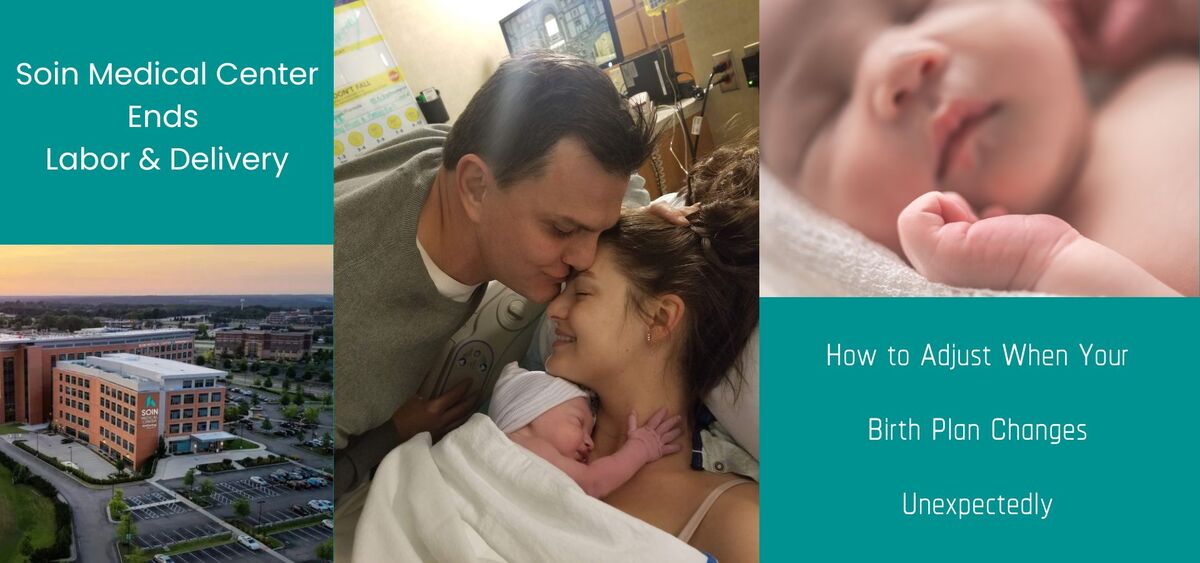Soin Medical Center Ends Labor & Delivery: What Expecting Families Need to Know
Soin Medical Center Ends Labor & Delivery: What This Means for Expecting Families

When you’re preparing to welcome a baby, your birth location is more than a building — it’s a place you’ve pictured yourself in one of life’s biggest moments. So when news broke that Kettering Health will be ending all births, deliveries, and cesarean sections at Soin Medical Center, many expecting families understandably felt shaken. For those already deep into their pregnancy, this kind of late-stage change can feel like the ground shifting underneath you.
If you chose Soin for its accessibility, calm environment, or personal care — especially if you were planning delivery with their midwifery program — this closure may feel both emotional and disruptive. You may now be questioning: Where will I give birth? Will my provider move? Will my care feel the same somewhere else? What if I’m already in my third trimester?
These questions are natural. And you do not have to navigate them alone.
Why Soin’s closure matters
Hospital closures affect more than just location — they impact continuity of care, support style, comfort level, provider relationships, and the emotional trust families build during their pregnancy. Soin has served many families in the Beavercreek, Fairborn, Xenia, and Greene County area, and losing a nearby delivery option means longer travel times and fewer choices.
It also means individuals who intentionally chose a smaller or quieter setting are now left choosing between larger hospitals or driving farther — sometimes into Cincinnati — to find a birth environment that still feels aligned with their needs.
Whether this change leaves you feeling uncertain, disappointed, overwhelmed, or just tired of having to rethink everything — your feelings are valid.
What happens next?
Kettering Health has stated that deliveries will be consolidated to its main Kettering location and its maternity center in Washington Township. However, some families are already looking beyond those two hospitals toward other Dayton and Cincinnati options — especially those who wanted midwifery-style care, lower-intervention birth options, or a certain type of support environment.
This is where having a supportive, calm guide can make a huge difference. A new hospital means new policies, new teams, and new routines — but it does not have to mean losing your sense of agency or connection during birth.
When the hospital changes, your support team becomes even more important
A doula is one of the few parts of your birth plan that can travel with you, no matter which hospital you choose next. If you’re suddenly faced with switching locations — especially late in pregnancy — having someone who already knows your hopes, preferences, comfort measures, and concerns can restore a sense of steadiness.
At Stork Helpers, we walk alongside families through situations just like this by offering:
-
In-person birth doula support
Continuous emotional, physical, and informational support before and during labor — at whichever hospital your birth ultimately takes place. -
Birth plan review or rewriting
Because a new facility may mean different options, we help you update your plan so that your vision stays centered, not lost. -
Guidance on switching hospitals or providers
We can walk through what questions to ask, how to evaluate a new hospital, and how to advocate for the type of care that aligns with your values. -
Prenatal emotional support
Space to process the change, talk through fears, and get grounded again. -
Placenta encapsulation & postpartum planning
Because support shouldn’t end once baby arrives — especially after a season of uncertainty.
If you were planning to deliver at Soin, here are next steps
1. Contact your provider and confirm their new delivery location
Ask if your existing OB or midwife will be moving their hospital deliveries elsewhere, and if so, which facility.
2. Compare realistic hospital choices
Consider drive time, birth philosophy, NICU availability, visitor policies, and intervention rates when choosing a new location. Some families are now looking at a wider range of Dayton and Cincinnati hospitals to find the best fit.
3. Re-center your birth preferences
This is a good time to revisit what you hoped for in your birth — mobility, monitoring style, light/noise preferences, support roles, comfort measures, atmosphere — and ensure the new hospital can honor these needs.
4. Strengthen your support system
Unexpected change can feel less overwhelming when you have someone walking alongside you who already knows your values and goals.
You are not losing your birth story
A hospital closure can make it feel like your birth plans are being taken out of your hands — but you still have choices. Your story is still unfolding, and you still deserve a supported, informed, confident experience.
Sometimes change — even unwanted change — becomes the moment families step more fully into their voice and preferences. A doula helps ensure those preferences stay present, heard, and honored, even when the setting shifts.
If you’re affected and feeling uncertain, we’re here
Stork Helpers is supporting families throughout the Dayton–to–Cincinnati corridor who are now re-evaluating their birth location and care plan after the Soin announcement. If you are feeling worried, rushed, overwhelmed, or uncertain about next steps — reach out. You don’t have to figure it out alone.
Whether you are 8 weeks or 38 weeks, your birth still matters — deeply — and your experience is worth protecting.
If you’d like help navigating your next steps, creating a revised birth plan, or securing doula support, you can contact us anytime at StorkHelpers.com.
Your hospital might be changing — but your right to a supported, empowered birth is not.

